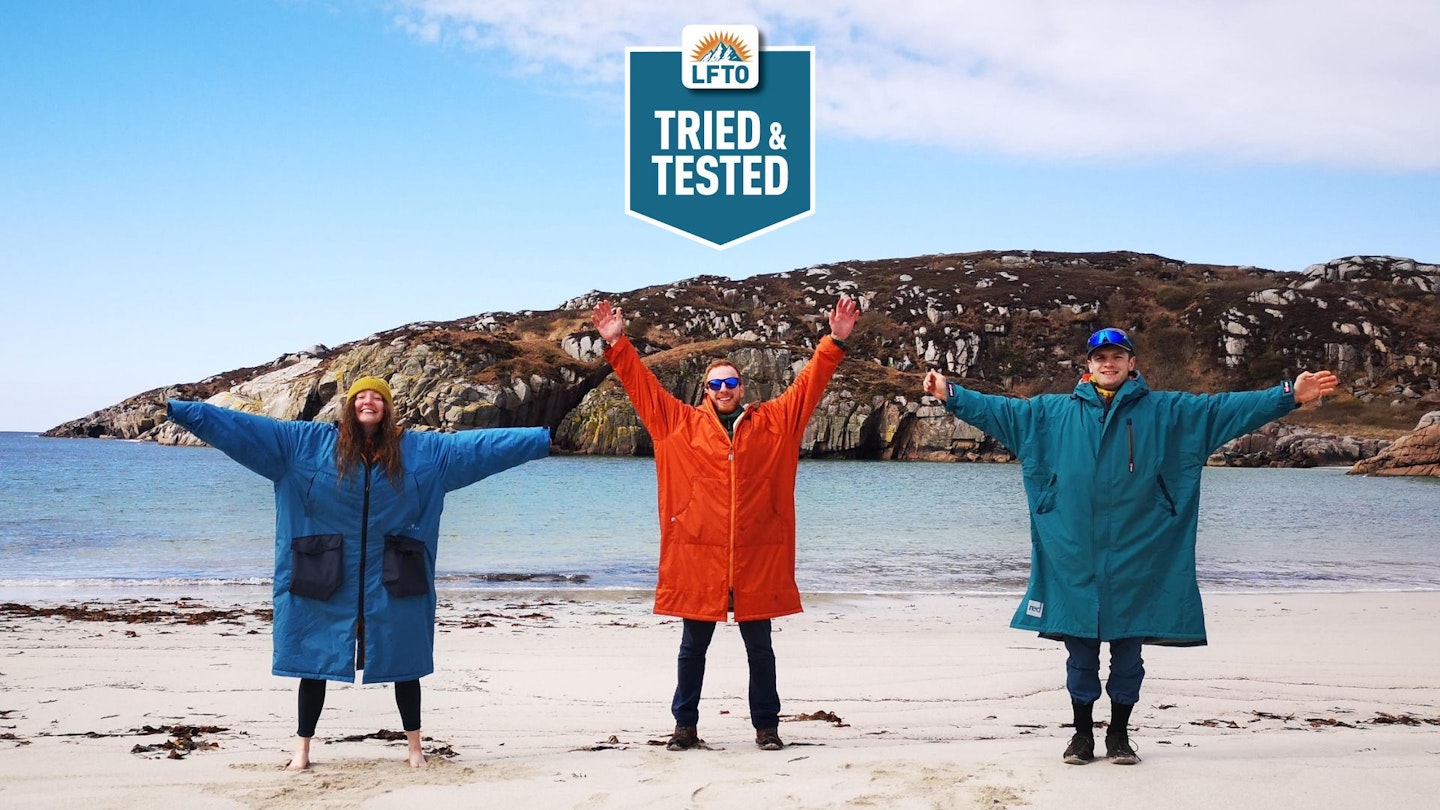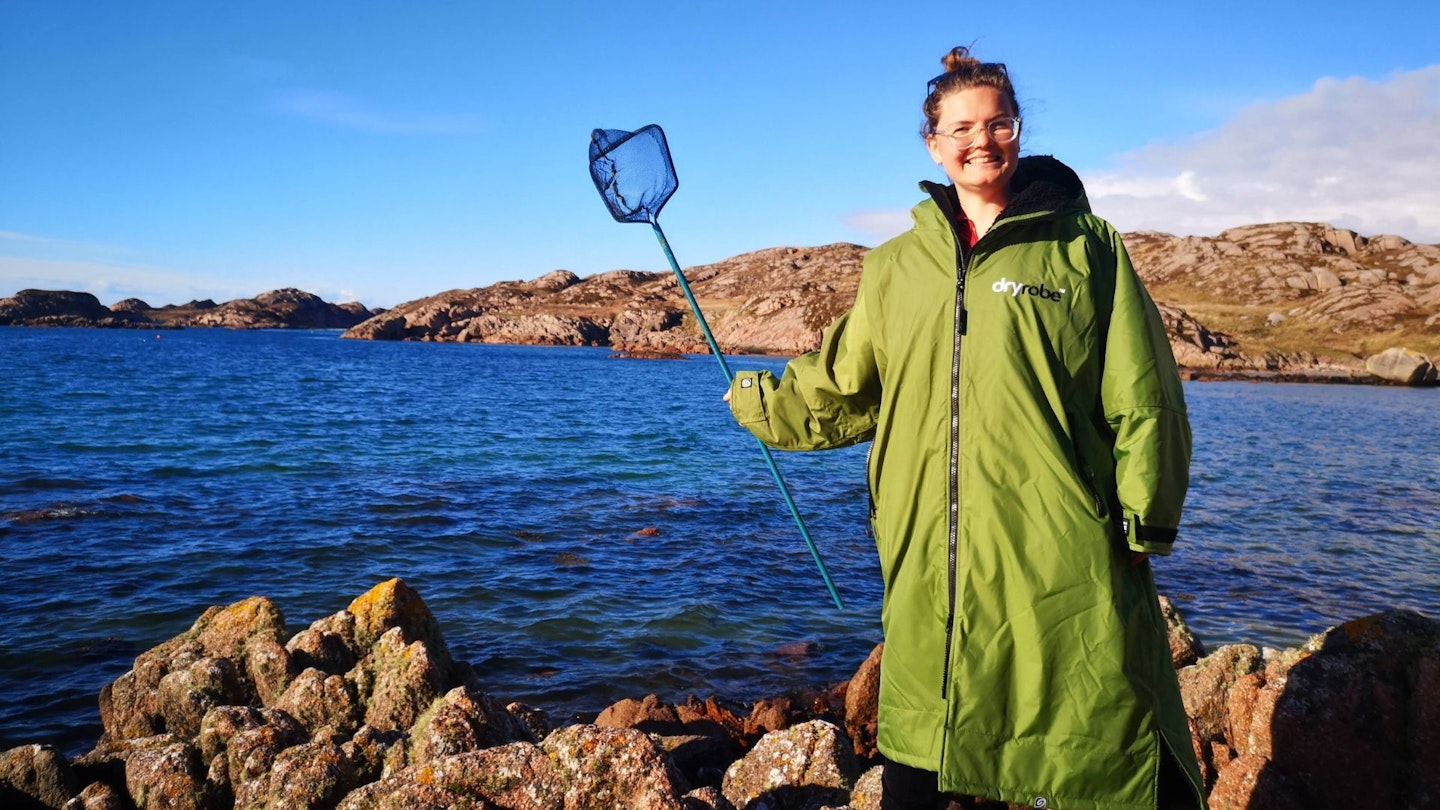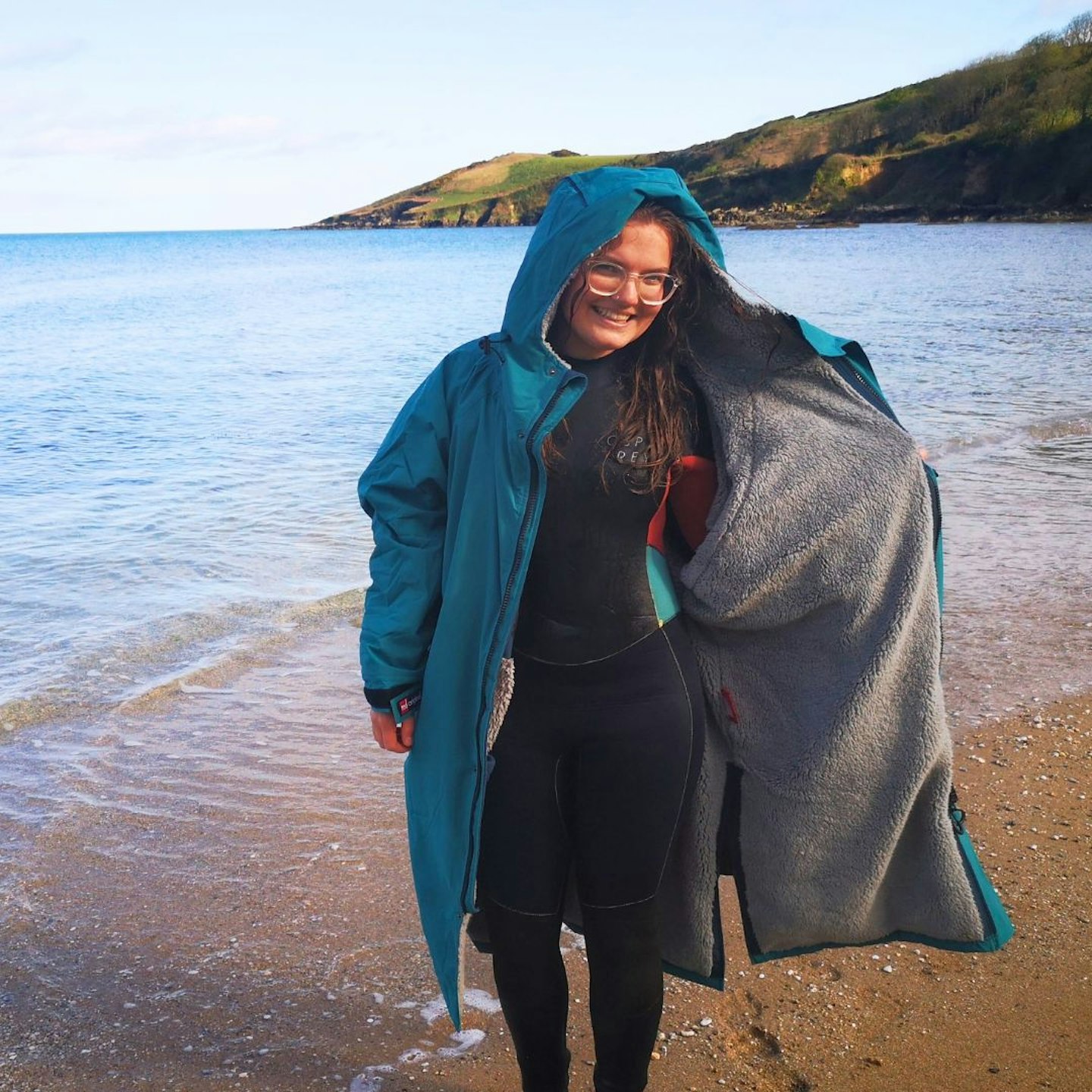Dry robes in the 2020s are what Crocs were in the 2010s: a niche water sports option adopted by AdventureMums™ before becoming mainstream fashion, with hundreds of brands now competing in the same space.
We’re recent converts to the world of changing robes (dryrobe® is still the leading brand, but it’s a registered trademark rather than an official product category - we’ll use ‘changing robes’ or ‘dry robe’ from here) but as regular swimmers, surfers and snorkelers, we can’t believe we didn’t get on the trend sooner. So, with our newfound enthusiasm, we put a range of dry robes to the test over winter and spring in both Scotland and Cornwall.
What are the best changing robes of 2025?
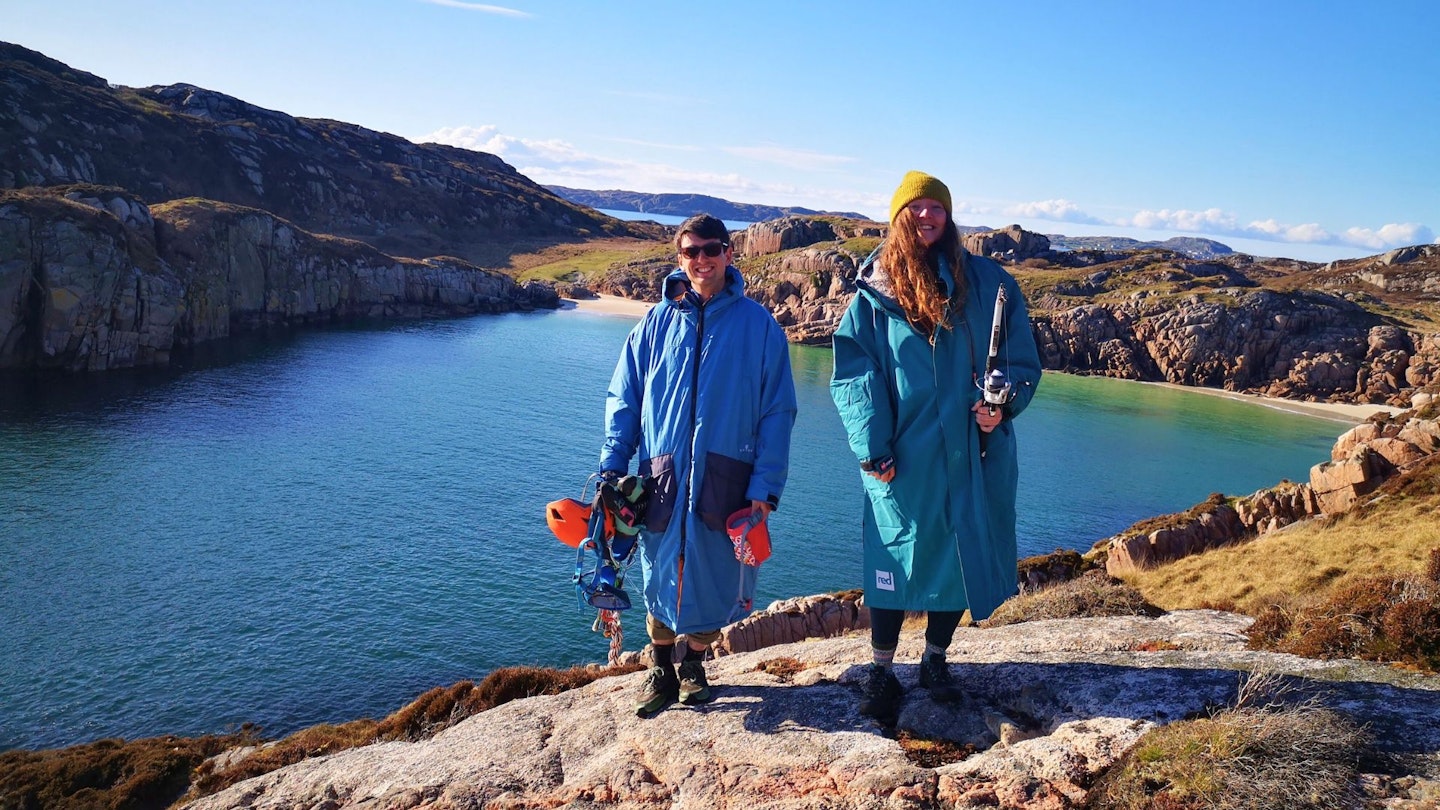
It’s not hard to see why changing robes are popular alternatives to waterproof jackets and parkas, even when used far from the sea in places such as the deli counter at Waitrose. That’s because essentially, changing robes are nice, big cosy coats: warm, waterproof and almost floor length to protect your whole body from the elements (or the chill of the freezer aisle).
Best in test: RED Adventure Long Sleeve Pro Change Robe EVO
Best value: Lomo Zipped Changing Robe Full Sleeve
Editor's pick: Passenger Escapism Recycled Sherpa Lined Changing Robe
Best waterproof dry robe: Dryrobe Advance Long Sleeve
The fluffy yet spacious nature of changing robes equips them perfectly to become a multi-use item, not only protecting your modesty and your core temperature when getting changed after plunging in cold water, but also when peeling muddy layers off after mountain biking, canyoning or hiking. They’re also fab for keeping the rain at bay when standing on the side of a football pitch or walking the dog - as well as serving as an indoor dressing gown for poorly insulated Scottish tenement flats.
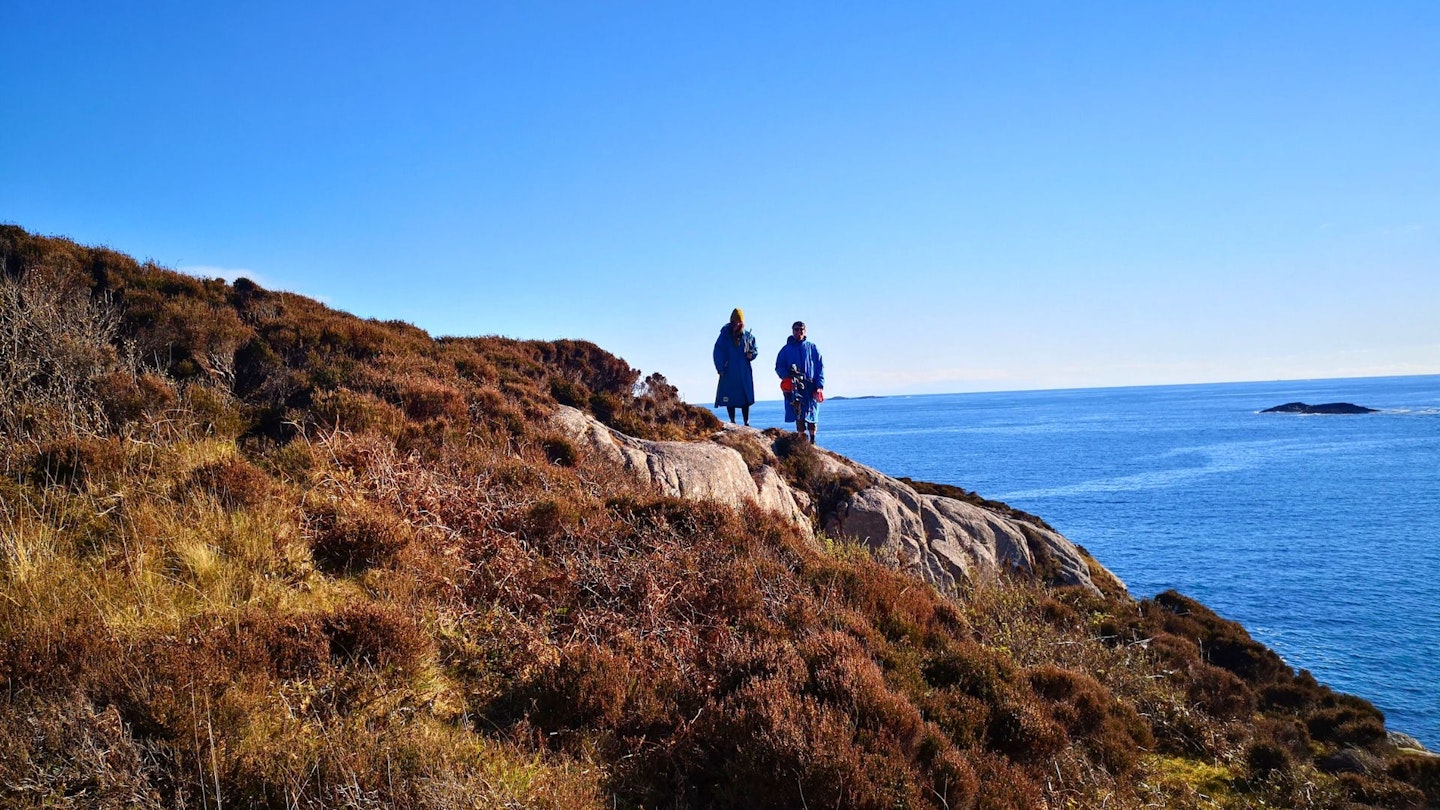
Yes, much in the same way that Crocs are the Swiss army knife of footwear, changing robes are the Swiss army knife of coats. But with a vast range of options out there, and an equally vast range of uses, it’s hard to know where to start looking. Luckily, we’ve rounded up the best in the business so you can take the plunge - or walk the cockapoo - with plenty of warmth, practicality and style.
How we tested the best changing robes
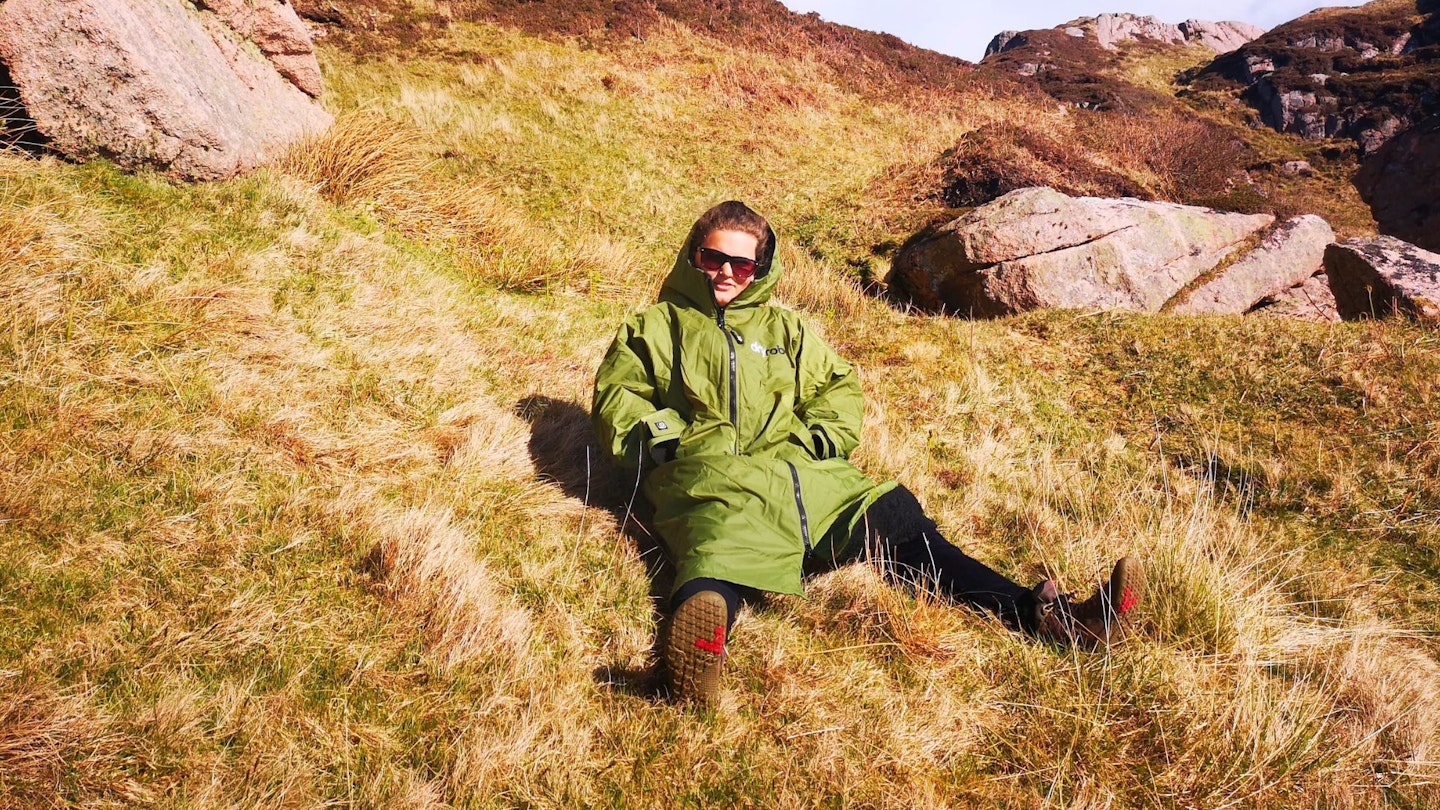
Over the course of several months, LFTO writer and part time otter Fliss Freeborn got her hands on a load of dry robes to test with her mates (and her very own AdventureMum™) while swimming, snorkelling, fishing, surfing, biking, and selecting pastries at Lidl. If you'd like more information about how we test products at LFTO, you can find it here.
From ski touring to trail running, winter scrambling, kayaking, surfing, mountain biking, climbing, snorkelling and foraging, Fliss will do anything that involves a tent, type-one fun and a good hearty meal afterwards. She lives in Glasgow but prefers to be somewhere in the far-flung Northwest of Scotland, cooking a big group dinner on a long summer’s evening after a swim.
The best dry robes reviewed:
Now £134.95 down from £159
We absolutely loved this robe from paddleboard brand RED. Everything from the build quality, to the fit, to the colour stood out as being top notch for us. Features we love include the soft, deep-pile sherpa fleece, which kept us insanely warm after coming out of the sea, and was great for sitting around a campsite at night when the temperature plummeted to low single digits. We also like the zip tag which can be used easily with thick wetsuit gloves, and the drawstring hood and neck baffle, which makes keeping out the breeze, well, a breeze.
The robe is entirely waterproof, with some magnificent beading action going on too - a PFC free DWR coating over two layers of fabric guarantees you stay both warm and entirely dry. We also love the fact the material isn’t noisy or glossy - it’s in a matte style which we think looks extra cool, especially in the teal colour we picked out. We’re glad we sized up to a medium, however, as getting changed under our usual size of a small might have posed a bit of a challenge.
RED also scores highly on sustainability, with the whole garment being made from recycled materials, while also being made ethically. Does all this come at a price? You bet it does. Retailing at just under £160 at the time of writing, this changing robe undercuts the original by a fiver, but that’s still a lot of cash to drop all at once. But we think it’s entirely worth it for a great all-round product which will last years when cared for properly, while giving a top notch performance in even the coldest, windiest conditions. Just size up if you’re actually going to use it to change under.
Pros
- Incredibly cosy
- Completely weatherproof
- Well made
- Drawstring hood and neck baffle
Cons
- Pricey
- Not the lightest
| Inner lining material | Deep Pile Fur-Style Sherpa Fleece |
| Outer shell material | 8k Waterproof / 3k Breathable recycled polyester with PFC free DWR coating |
| Weight | 1.6kg (Medium) |
| Sizes available | S, M, L, XL |
The thing about most changing robes is that they don’t often actually dry you particularly well, despite claims on the websites about wicking away moisture. But Scottish watersports brand Lomo have cracked it with a robe that’s lined with a lightweight towelling material rather than fleece or lambswool, which we found actually dries you properly while still keeping the elements off.
We also prefer the Lomo robe for muckier, damper activities like mountain biking or camping, seeing as you’re not wearing a deep-pile carpet for mud, grass, sheep dung and such like to get stuck in - a problem with other, fleecier numbers when used and abused outside.
And yes, that does mean that this robe doesn't keep you quite as warm as other brands, but there’s still a good amount of insulation provided, and it’s completely windproof too. Additionally, the Lomo robe is one of the few that is specifically designed with changing in mind, as it comes in just one large size, allowing for complete freedom of movement underneath, outperforming some rivals quite significantly on this front.
This does mean that if you’re a larger human, you might struggle a little, but we tested this with people sized between a UK8 and a UK16 and a men’s Large, and everyone coped. Other features we like include two waterproof zipped pockets, a drawstring hood for windier days, and the fact that it’s perfectly large enough to unzip and use as a picnic blanket on the beach.
The LOMO robe is very good value, coming in at around £30 below the average for a zipped, insulated changing robe with full coverage of the sleeves and knees. If you’re on a smaller budget, run hot, or don’t need the insulting prowess of other changing robes but still want something to keep the weather out, this could be the top choice for you.
Pros
- Towel lining absorbs water effectively
- Fully waterproof outer
- Drawstring hood for windier days
- Great value in comparison to other brands
Cons
- No hanging loop
- Not the warmest changing robe on test
- Only one size
| Inner lining material | Quick-drying towel material |
| Outer shell material | Waterproofed polyester |
| Weight | 1.5kg |
| Sizes available | One size |
This is the editor’s pick for a changing robe; it might not tick all the boxes of the Best in Test for build quality, waterproofing and features, but it’s the one we’ve come back to over and over again and never want to let go of. It has charm.
The Escapism sherpa lined robe from Passenger is a lightweight option which packs down to half the size of some of its rivals while maintaining exemplary warmth and cosiness. While it’s certainly not the most durable and weatherproof option out there (it lacks taped seams, a drawstring hood, and is only coated with a water repellent coating rather than being made of waterproof layers) it’s easy to wear, much easier to move around in than some of its rivals, and most importantly, less bulky to pack into a bag for the beach than other brands.
It does wick away some of the moisture from you after swimming, but we’d recommend drying the worst off with a secondary towel - the Escapism is the “keep warm” option as opposed to Lomo’s “dry off” option. It also has a handy hook for hanging it up on the back of a door.
We love the fact this is basically just a giant fleecy coat, and while you can change in it if you size up, we think it’s a great all rounder if you’re looking for something more on the light dog-walking/Waitrose browsing/wearing it as a dressing gown side of things - although it’s great for camping too.
But let it be known we’ll be packing it every time we go for a surf just because we love the colour and fit, despite the fact it's not as waterproof as other brands. However, to make up for it, Passenger score mega sustainability points, as the whole thing is made from 85 recycled plastic bottles - so you’re doing your bit for the planet too.
Pros
- Incredibly comfortable fur lining
- Made from recycled plastic bottles
- Lightweight and more packable than other brands
Cons
- Not as great for actually drying you
- Only water resistant, not waterproof
| Inner lining material | Full recycled sherpa fleece lining |
| Outer shell material | 100% Recycled REPREVE polyester ripstop (50D) with a PFC-free water repellent coating (DWR) |
| Weight | 809g |
| Sizes available | XS, S, M, L, XL |
The original Dryrobe immediately feels like the final boss of changing robes: heavy, warm, and just about bombproof. We opted for the Dryrobe Advance, the stalwart design that you see floating about everywhere, because the longer sleeves and superior waterproofing make it ideal for the wet and windy Scottish climate.
We loved this one especially for cold water swimming and snorkelling, as the quick-drying fleece lining cocooned us nicely, while still giving just enough room to change out of a thick wetsuit. The main advantage to the original dryrobe is that it’s actually damn well waterproof, unlike some of the knock-offs and other brands available.
Complete with a recycled nylon waterproof layer, heat-sealed seams and a durable water repellent coating, this beaded well in the rain and kept us completely dry despite getting caught in a couple of torrential showers during testing. We also loved the accessible zip, which was easy to use with cold fingers, and we liked that the pockets were also fleecy - but not deep pile so they don’t get too grubby. The only thing we missed was an adjustable hood, but overall this did feel, in one tester’s words, “like wearing a hug”.
The dryrobe advance is a bestseller for a reason, despite the price tag coming in at a hefty £165. That’s because you know you’re getting complete quality assurance from a brand who tries to do good for both people and the planet. It sounds cheesy, but knowing that your cash is funding the RNLI, and going towards developing inclusive designs so that everyone can enjoy the outdoors is a real bonus. Dryrobe also does well on their sustainability credentials, with both the lining and the outer made from 100% recycled materials. Plus they come in all sorts of funky designs and colours.
Pros
- Highly durable
- Completely waterproof
- Very warm
Cons
- Heavy
- No drawstring on hood
| Inner lining material | Synthetic lambswool lining made with 100% recycled polyester (rPET) |
| Outer shell material | 100% recycled nylon w/ PFC-free BIONIC-FINISH ECO Durable Water-Repellent (DWR) |
| Weight | 1.3KG |
| Sizes available | S, M, L, XL |
The Voited dry robe is a great all-rounder. It’s one of the only robes to use both microfleece and loft insulation as an inner layering system, rather than just opting for a fleece pile with a waterproof coating. This makes it feels more like a large coat than a classic dryrobe on first use - but actually the microfleece lining does a decent job of drying you off too.
We like the fact it dries out very quickly in comparison to other brands, but our favourite features are the chest pockets which keep your hands nice and toasty when you’re just out of the water. It also features an adjustable hood and two other “dump” pockets which are roomy enough to pack a small loaf of bread and a nice bit of cheese for a post-swim snack.
Voited’s dry coat also sticks to its word when it comes to weatherproofing: it’s more waterproof than Passenger’s option, with a laminated waterproof fabric plus a water repellent coating for excellent beading. The whole thing is also made from recycled materials from what we can see.
In usage terms, this would make a good value option for anyone looking for a changing robe to stand about in - it’s not as cosy as the dryrobe or red changing robe, but it’s nearly as waterproof, and feels lighter in weight and bulk. A good option for those looking for a tad less warmth, especially if you’re not planning to swim in the deepest, darkest winter.
Pros
- Great size for changing under
- Completely waterproof
- Dries out faster
Cons
- Not quite as fluffy or warm as other brands
| Inner lining material | Synthetic insulation with microfleece liner and CloudTouch™ panel |
| Outer shell material | 100% recycled 50D Ripstop fabric coated w/ PFC-free Bionic Finish®Eco (18,000mm HH) |
| Weight | 1.34kg |
| Sizes available | XS, S, M, L, XL |
Some people just want to get changed in peace on the beach, but don’t want to lug around a 1.5kg dryrobe everywhere they go. Enter: the towelling robe. These things were a staple of our childhoods, but now they’re having a resurgence thanks to the boom in wild swimming - and it’s easy to see why. They’re great for getting changed under, dry you off incredibly effectively, and are much more portable than your waterproof changing robe, as well as being easier to clean and dry.
This option from Finisterre feels fluffy, well-made and is exceedingly easy to use thanks to the short armholes. It’s great for warmer beach days, but also has a hood if you are using it in the shoulder seasons and prone to getting a little chilly.
While it’s not designed for standing around in for long periods of time, it does offer a little protection from the wind when peeling off a swimsuit, and it has good coverage as well. It does, however, come in just one size which isn’t huge, so if you’re any taller than 6 foot, or perhaps larger busted, we’d recommend trying a different brand.
Finisterre score highly on sustainability and ethics, using only road transport to ship their products, as well as using ocean-safe, water soluble bioplastic packaging. The robe is 100% organic cotton too, meaning fewer pesticides are used in production.
Pros
- Lightweight
- Dries you off effectively
- Easy to pack
Cons
- Heavy when wet
- For summer use only
| Material | 100% organic cotton |
| Sizes available | one size |
We love this lightweight changing robe from Lifeventure. At £42.99 it's the cheapest option on our list - unusual seeing as it's also the lightest weight by a long way. Coming in at 555g, this packable towel is always in our rucksack for coastal adventures. It packs down to something a little larger than a Nalgene, and gives full coverage, including sleeves.
It's also great to change under, with plenty of space to take wetsuits on and off and reapply your underwear. We also like the hood as it dries off our hair in a matter of minutes with some vigorous rubbing. We also think it's fab for campsite showers when getting changed back in your tent is the easiest option: it covers everything modestly.
The downside is the material. It's microfibre fleece, which of course, is very lightweight but when it comes to really getting your completely dry, is less effective than a towelling-based robe. But because this robe is so good for warmer summer days, you barely notice this when using it: by the time you've been wearing it while you look for your missing sock, you'll have dried off anyway.
Pros
- Very lightweight in comparison to all other options
- Very small pack size
Cons
- Microfibre towel less effective than other materials for drying
- For summer use only
| Material | SoftFibre fabric |
| Sizes available | one size |
How do I buy the best dry robe?
If you’re still unsure as to what you need to look for in a dry robe, here’s everything we’ve learned from our testing period, with expert advice from experienced gear testers and the brands themselves.
Is a dry robe waterproof?

Not every dry robe is fully waterproof, so this is something you have to look very carefully at when choosing. Most dry robes will have a DWR (Durable Water Repellent) coating, which is essentially a chemical film which repels water, making it bead up and run off a particular surface.
However, this makes a fabric water resistant rather than completely waterproof, as once the repellency wears off (it can be reapplied with a reproofing spray) or is overwhelmed by significant quantities of water, the garment becomes soaked through because there is no secondary waterproof layer to protect against further ingress.
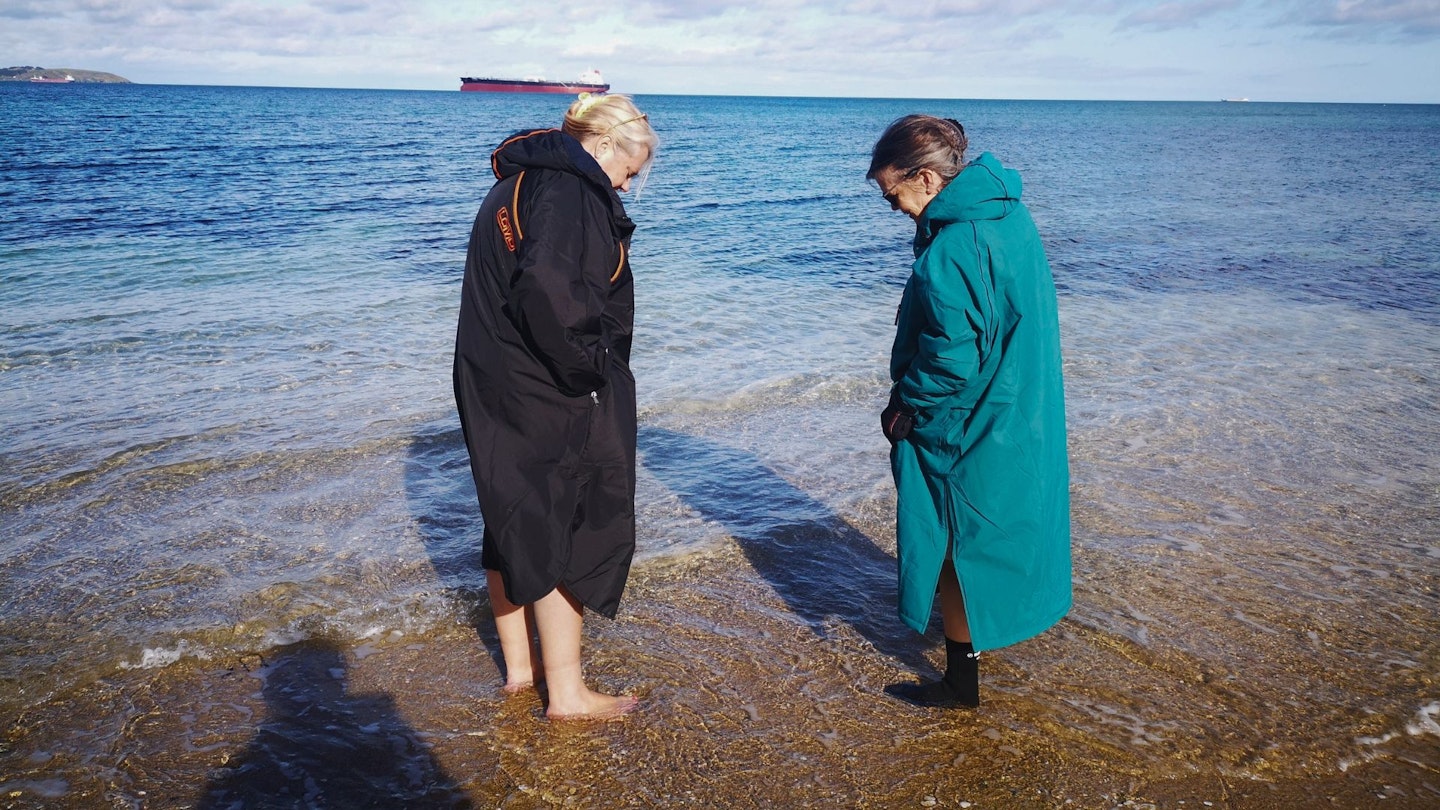
If you’re after something that’ll withstand downpours for a long time on the side of a football or rugby pitch, you’ll need to look for a waterproof layer in the construction, in addition to taped or sealed seams. You’ll know on the website you’re buying it off because it’ll have a number - the hydrostatic head - next to the description of the fabric.
Can you wear a dry robe as a coat?

Absolutely. In fact, many of them are more waterproof than you’d need for an average UK downpour, and don’t need to have the same breathability ratings as more active waterproof layers. That means that if you’re not using them for hardcore physical activity - which would be difficult anyway given the size of them - you’ll stay completely dry.
Most dryrobes are also rather warm, making them great for winter excursions if you’re not planning on moving much. Think of them like a static coat - if you’re running anything except a car boot sale, look elsewhere, but if you’re going to be standing about for a long time in bad weather, then a dry robe might be your new best friend. Just remember to double check the waterproofing extends beyond just a DWR coating and the garment has taped or sealed seams, and a hydrostatic head rating.
What size dry robe should I buy?
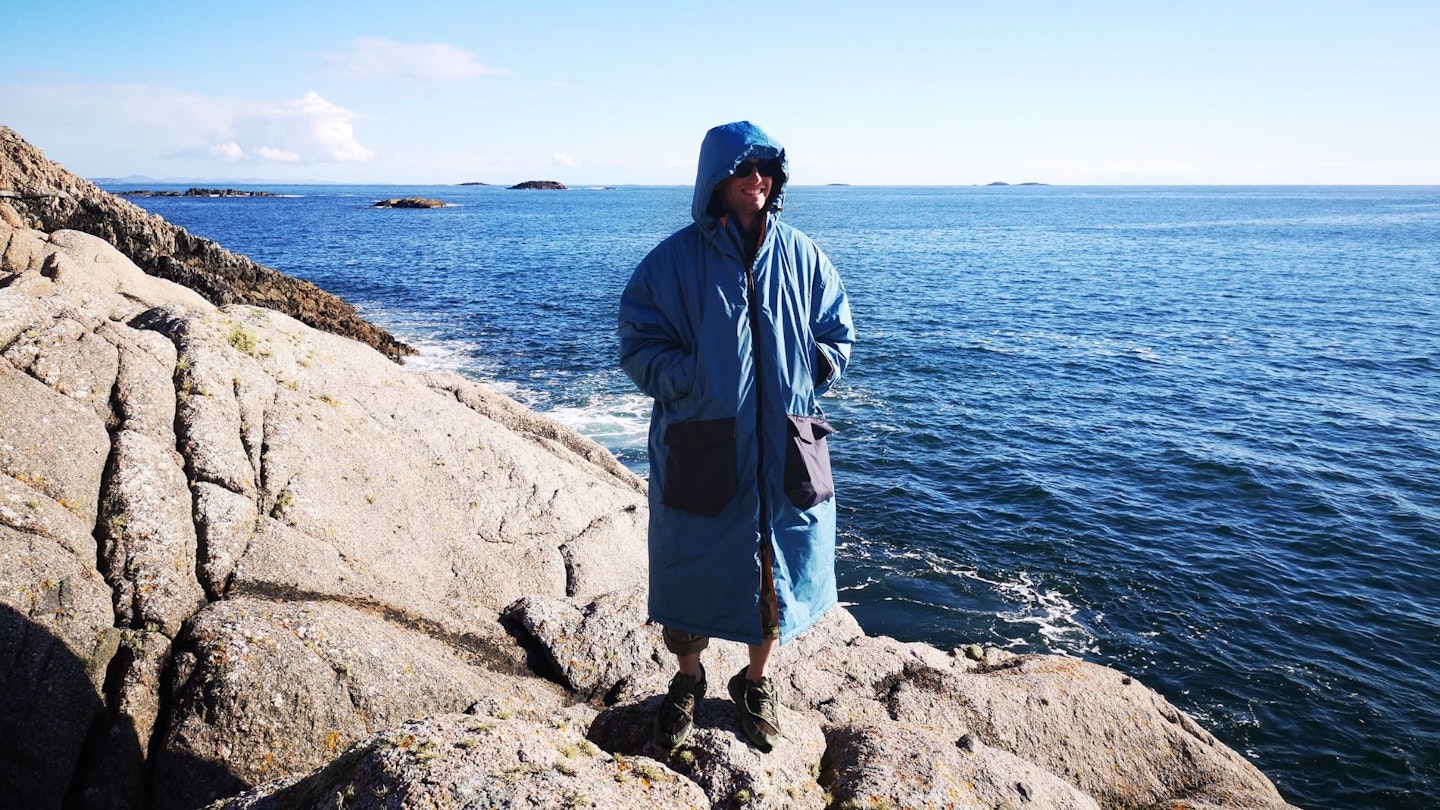
That depends on the usage intent. For all of the changing robes in this test, we sized up because we knew we wanted to get changed in and out of a wetsuit under them. For the most part this worked well, and also enabled them to be shared amongst testers of different sizes without anything coming up too tiny. If you’re looking to change in and out of it on the regular, we also recommend you size up.
However, if you’re looking for your changing robe to function more as a warm, wearable tent to stand about in only, then choose your usual size according to the size guide on the website - dry robes tend to come up oversized anyway, so you won’t end up with anything too tight fitting.
How do I clean a dry robe?
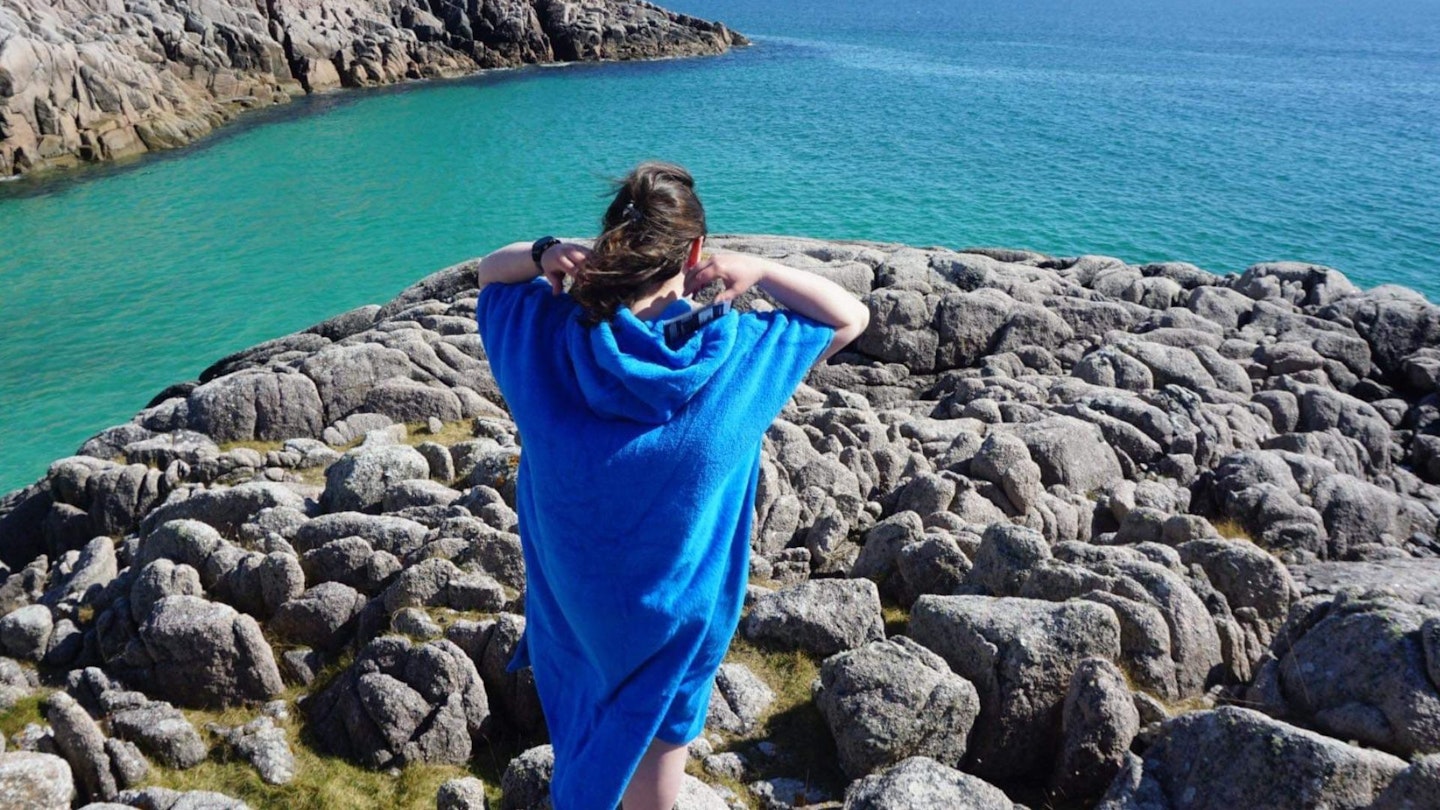
Most brands recommend spot-cleaning where possible and only cleaning in the washing machine if essential. Those that are waterproof or water repellent should be cleaned in the same way you would a waterproof jacket (with an outdoor clothing cleaner from Nikwax or Grangers) to protect the waterproofing, and then hang dry.
Tumble drying isn’t ever recommended for dry robes - you’re much better off either flat drying it in the sun, or hanging it up on a clothes line outside.
Does length matter?

Length does indeed matter. Many changing robes are available in shorter lengths, as this allows them to use less material, feel lighter and be overall more transportable - and often makes it easier to change under. However, for full winter coverage, you need to look for a dry robe which goes at least down to your knees, if not your ankles, as having your legs protected really will make a difference in colder weather.
We found during testing that ¾-length dryrobes were easier to move in for activities like walking or fishing, but the longer versions kept us warmer for more important things such as chatting around a fire. What you choose to use yours for will dictate whether to go for a shorter, more portable one, or a longer, beefier option.
Does sleeve length matter?
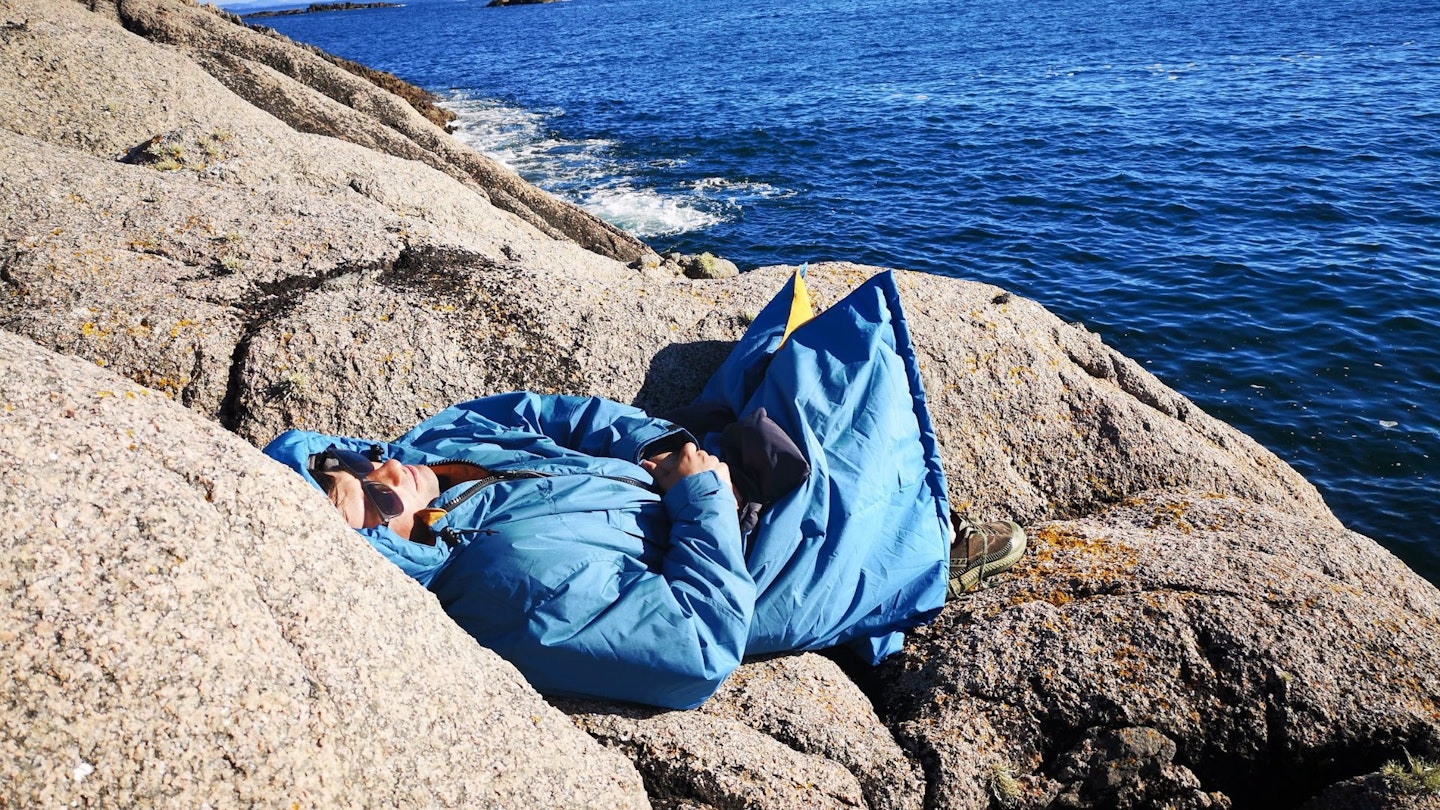
Yes. Many dry robes will come with a choice of sleeve length - short is best for changing in and out of because it allows you to quickly and easily slip your arms under to peel off your wet clothing. The shorter sleeve versions are often a little cheaper too, but for full wet weather or winter coverage, you’ll want to opt for something with longer sleeves with a velcro cuff.
Will a dry robe actually dry me completely?
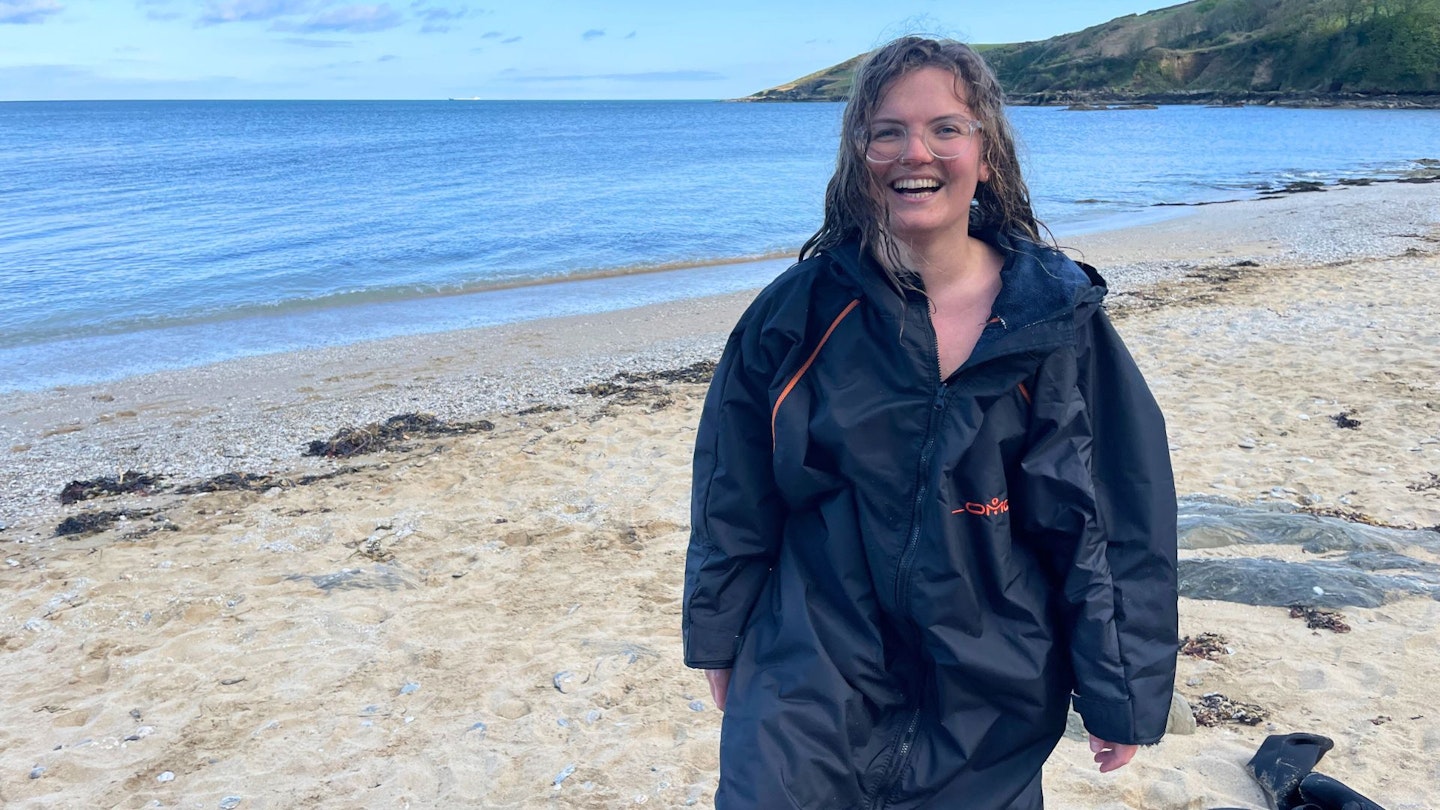
Any towelling ponchos, or a robe lined with towelling material will do a good job of drying you off - but bear in mind they aren't nearly as cosy as the other products on offer.
If you're after a classic dry robe with a plush inner lining, do take a little towel too to get most of the water off - we found that being completely wet while climbing into a soft cosy robe ruined the experience for us, and the salt water even made us a bit itchy after a while. Although you will eventually get dry by standing about in a dry robe, you're best off using it to get changed, then towelling off briefly before relaxing in your cocoon.
Which insulation is best?

The original Dryrobe uses a lambswool style deep pile fleece, which traps warm air against skin with its huge surface area. However, some people claim that this isn’t as soft as it could be - a criticism that we disagree with having tested out the original dryrobe. If you do have more sensitive skin, though, opting for a softer sherpa style fleece lining might be the way to go if you’re after warmth without even a whisper of scratchiness.
About the author

Fliss Freeborn is a writer and gear tester for Live For The Outdoors. During her time at university, she spent considerably more days in a tent in the Scottish Highlands than she did in the library, which she highly recommends as a study strategy. Fliss also believes that life is too short to eat bad food outdoors, and that cooking good scran while in the hills is easier than you might think with the right kit and some forward planning – yes, you can always do better than a pot noodle.
